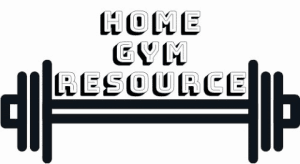Building an outdoor gym is great but it also means all the equipment is exposed to the elements. How can you protect your outdoor gym? Here are the best ways to keep your outdoor gym in the best condition possible.
The best way to protect your outdoor gym equipment from deteriorating from rust and UV is to make sure those things never meet the equipment. Storage inside, a roof or a tarp will do this. Proper maintenance with protective products and paint also keeps the equipment in good shape.
To find all your options and some good alternatives by scrolling down.
Contents
Threats to outdoor gym equipment
Before we get to what we have to protect and how, let’s first look at the threats to outdoor gym equipment. What can damage, deteriorate and destroy our precious outdoor gym?
First off, let’s make clear what kind of gym we’re talking about. Not one of those specialized outdoor gyms you can see in some parks. We’re talking about a full home gym that’s in your garden. Sure you probably make some other equipment choices than if you would build a gym inside but, overall the setup is pretty similar.
An outdoor gym can be in the garden, driveway but also on the patio or garden.
So here’s what has an impact on the overall quality of gym equipment outside;
- Water: Water causes corrosion and since most gym equipment is made from metal, that’s a big problem since it can affect the structural integrity of your equipment. Most machines and racks have hollow tubes for structure. If water gets in there, it starts rusting from the inside and you don’t even notice. Click here to find rust prevention tips.
- UV light: UV light is harmful to most surfaces. Especially paint and rubber will deteriorate quickly when left in sunlight.
- Extreme temperatures: The temperatures have to be pretty extreme for this to become a problem. Most likely it will affect the paint at which point the equipment becomes more susceptible to corrosion. Rubber and similar materials can crack with cold.
Besides that, another threat is that some people just take what isn’t theirs. And things that are outside are easier to take than items inside.
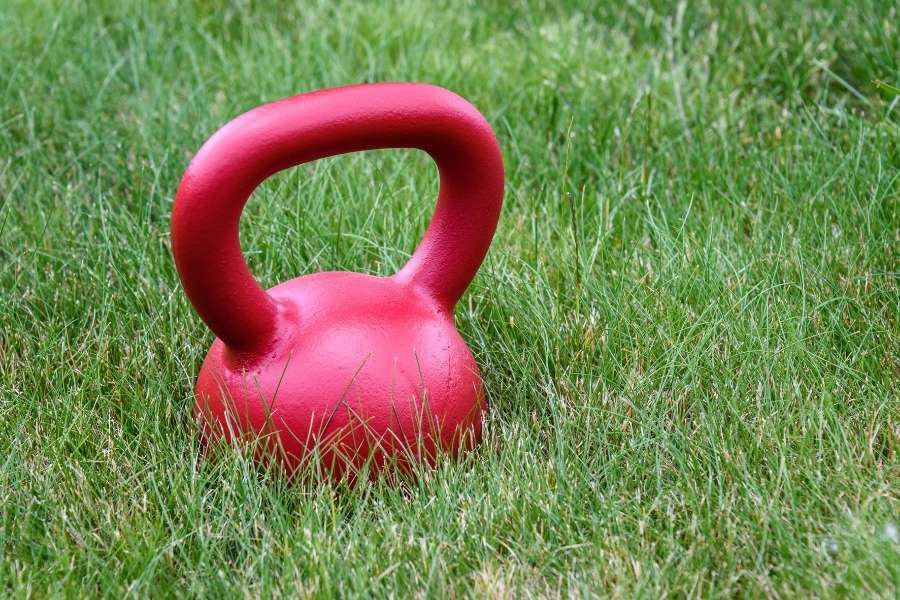
Equipment choice for an outdoor gym
The best way to protect your equipment is to buy equipment that’s meant to be outside in the first place. Those pieces of equipment are going to be UV and corrosion protected or at least to a much larger degree than other equipment.
The problem is that there is very limited choice in this category. That’s why most people will start looking at gym equipment that’s meant for indoor use. Equipment that’s meant for indoor use can handle a damp basement or garage but keeping it outside all the time is not what it was designed for.
Things like a power rack and a bench will not last too long if just left out in the elements without protection or maintenance. However, with some protection and maintenance you can keep the equipment in working order for longer. Don’t expect it to last as long as inside however. So opting for cheaper equipment can be a good idea since you know it’ll have to be replaced anyways.
Of course any equipment that has a display or uses electricity in any other way is a bad idea to use outside. Water and electricity is not a good mix.
In a basic weightlifting setup you’ll have the following equipment;
- Power rack
- Bench
- Barbell
- Weight plates
- Dumbbells are a possible extra
Those pieces of equipment will form the basis of most gyms, indoor or outdoor. Of course it’s possible to add more equipment you like.
However, most of those things are actually pretty easily moved around. The barbell and weight plates can be put on a plate tree with wheels and moved around without much effort at all. Just store them in the garage or a shed.
The bench and power rack are a bit more difficult although not impossible to move around, but more on that later. If you want to leave the power rack, bench and possibly some other equipment outside, keep reading.
Just want something that’s maintenance-free? Here are the best rust-free barbells.
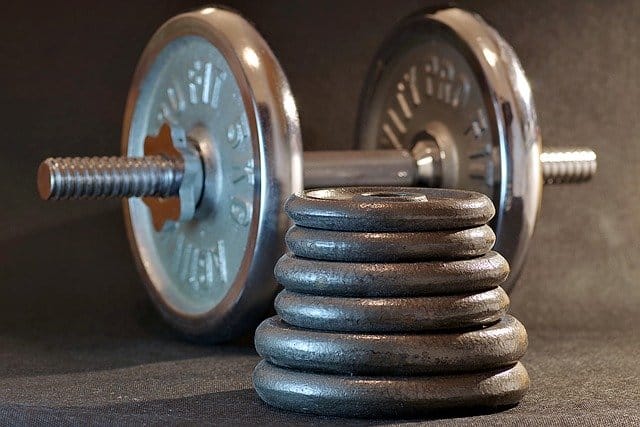
Second hand
Chances are your equipment that’s staying outdoors isn’t going to look great forever. In fact it might start looking a bit worse for wear pretty quickly. That doesn’t mean you can’t use it anymore, it just doesn’t look so good.
So why not just buy second hand equipment. No need to throw away extra money on new equipment that will look the same as second hand stuff in a few months.
Seal gaps
For some equipment it’s a possibility to seal some of the places where water can get in. If there is a rubber or plastic cap at the end of a metal tube or post, that’s a place water can get in and
Overall, this is something that’s not possible or even useful with every piece of equipment. A power rack for example has so many holes in the upright posts that sealing the top isn’t going to do anything for example.
The bench is a prime example where this could help however. Sealing all the plastic caps on the end of the metal tubes is going to make a difference. Use bathroom caulk or something similar to seal it off.
Also, when buying a bench for outdoor use, don’t get one that has a telescopic adjustment. That’s a big spot where water can get in. A simpler step mechanism is better in this situation.
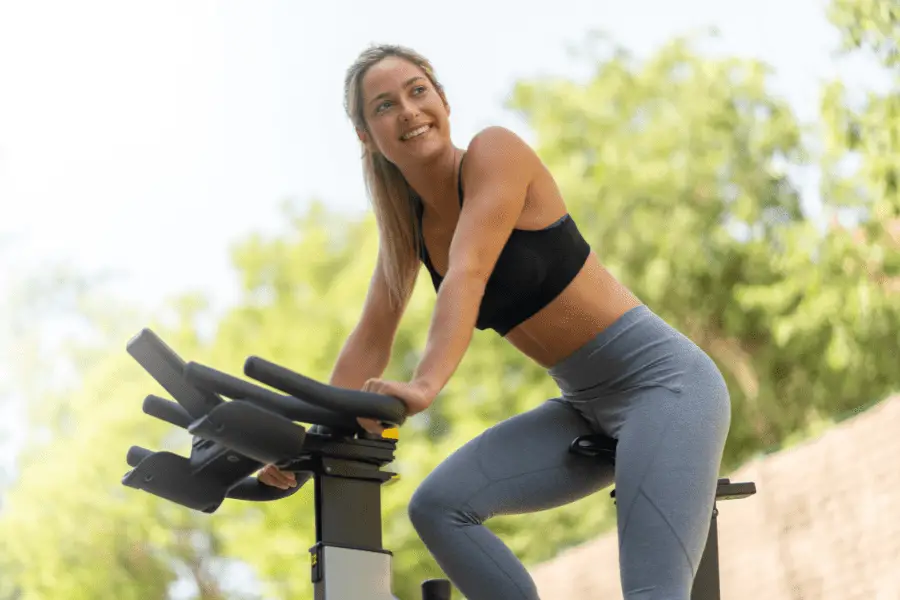
Put a roof over it
The best way to protect your equipment from sunlight and rain is to make sure they never reach the surface of the equipment in the first place.
While it might take some of the fun away from working out outside, a roof is great at protecting equipment against the elements. Humans have been using roofs forever to stay dry and out of the sun because they work very well.
The roof doesn’t have to be some very complicated structure, something simple will suffice as long as it stays standing and covers your equipment. Of course make sure to take local laws and building regulations into account.
You can argue that having a roof over something means it’s inside. But in my opinion, if there are no walls it’s still outside. I’m sure if you had do sleep in a place with only a roof and no walls you’d call it outside.
The downside of a roof is that you also block the sunlight while working out. That’s probably one of the biggest reasons you want to work out in the open air in the first place.
Another option is a small storage shed to store your equipment in. If you make this shed waterproof you can store the more vulnerable equipment in there. Depending on your setup, you could put all the equipment in a pretty small shed. This way you don’t have to worry about it and can just take the equipment out when you feel like it.
Use a Rubber Mat
Using a rubber mat under your equipment also helps quite a bit. Rolling out an equipment mat (you also keep clean) means you get a lot less dirt and water on your equipment. Rubber mats are the best option since they’re durable and easy to keep clean.
Rubber mats are quite heavy though so use the thickest one you can comfortably carry around.
Cover
If you don’t want to build a roof, some other kind of cover is in order. Because just leaving the equipment in rain and harsh sunlight is going to ruin it very quickly.
So if a roof is out of the question a cover is the next best option. This can be a simple tarp or something custom made that fits perfectly over your equipment. And when you need it, it’s easy to remove. It also means no permanent roof which means more sunlight.
If you’re going the tarp route, get some with reinforced holes. Then get some anchors put into the foundation so you can strap down the tarp really well. This helps getting better protection since the tarp stays put. It also helps prevent against theft a little bit more than nothing.
Neither a roof or a tarp are going to do anything protecting your equipment against theft though. Also, no matter how waterproof your equipment covers are, they usually don’t do anything against water intrusion from the bottom. So if it rains and the ground gets wet, water will still get to the equipment. Putting the equipment on sturdy patio tiles that drain quickly will help a little.
Maintenance
Gym equipment always requires a little bit of maintenance, even if it’s placed inside. But outside it’s even more important.
Keep everything that has to be lubricated, lubricated very well. Rain will wash away lubricant quicker and sunlight can deteriorate it faster than inside. Keeping moving parts generously covered in grease or other appropriate lubricant prevents against corrosion as well.
Paint is likely to flake off pretty quickly. UV light and big temperature changes will do that. When it does, the surface underneath is likely to start corroding quickly. Stay on top of the paint and when it starts to go bad, make sure to sand it down and apply a fresh coat. Anti-rust primer can be a very useful tool as well.
UV protection products
If you’re going to paint anyways, why not take the extra step and apply some products that are specifically designed to protect against UV?
What is painted and spends most of its life outside? Yup, a car. That’s why there are some really interesting products in this category from the automotive industry.
For paint there is: Chemical Guys Jet Seal (Amazon link)
Apply that to all the painted surfaces and it should last much longer. It does have to be applied periodically but that’s still easier than dealing with corrosion.
303 UV Protectant Spray (Amazon link) is good for all the other materials. It protects Vinyl, rubber, PVC and more. The upholstery of the bench would be the prime example of where to use this.
Covering all the surfaces that will be exposed to UV with these products will go a long way in keeping everything nice and shiny.
Corrosion protection inside
Usually gym equipment isn’t protected against corrosion very well on the inside. Besides sealing everything off, you can also spray corrosion inhibitor on the inside.
WD-40 has this corrosion inhibitor spray (Amazon link) that’s pretty much perfect for the job. It protects metal for up to one year when kept outside which will make a massive difference. One problem is that it’ll be difficult to get the stuff everywhere on the inside although the long straw helps a bit. This is a problem with getting any rust prevention product inside an assembled product though.
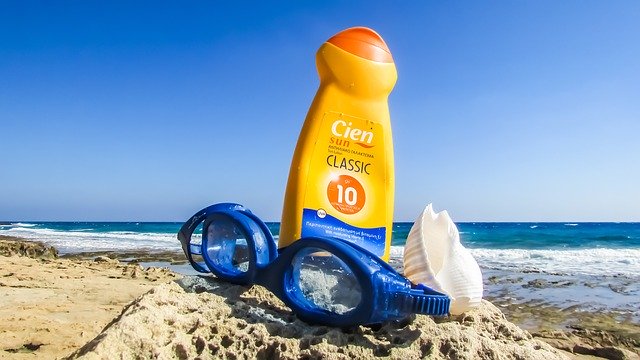
Storage
Some things should just be stored correctly. Things like weight plates or dumbbells are relatively easy to move around and if you get the correct storage solution, it’s possible to store them in a shed instead of leaving them outside.
If you have a shed next to the gym equipment, you could even leave it in there without many issues. For a barbell, plates and possibly dumbbells you don’t need a big shed. 15 square feet of floor space would probably be enough.
If you don’t mind walking a bit further, the garage or another place in the house is another option to store these things.
Pick the right location
The right location can also help preserve your outdoor gym equipment. There are two locations that are important;
- Around the house
- In the world
Around the house
Which place you pick around the house is mostly important for theft prevention. The backyard is probably a little bit easier to keep an eye on than the front lawn.
For UV and rust protection it doesn’t matter all that much. Just pick a spot that’s good to work out at at the time of day you want. In other words, if you want to work out outdoors to get some extra sunlight, make sure the spot you pick has sunlight the time of day you work out.
Geographically
Ok, you’re probably not going to move to a place with a different climate just so your gym equipment lasts longer outside. But your geographical location does have a big impact on how well you can create an outdoor gym.
Some places are just too harsh of an environment to build an outdoor gym. You could possibly do a lot to make the equipment last but if it’s impossible to use most of the time, why bother? Places that have good weather for outdoor workouts most of the year are usually pretty sunny but not too hot or wet. In those places it is a bit easier to keep everything in shape but it’s still more work than inside.
In places where working out outdoors isn’t an option for a large part of the year, why not get equipment that’s easily moved outside when the weather is good? That makes things so much easier.
Solid foundations
The foundations your outdoor gym is built on is important as well. Just putting a power rack on soggy grass isn’t great.
Ideally you would have a concrete foundation that’s also raised a little bit above ground level. That way, it’s less susceptible to flooding and water won’t gather. Just make sure the drainage is sorted so water doesn’t collect on the concrete.
A flat concrete slab is great for placing equipment as well. It means you can bolt equipment to the floor which is good for safety and deters thieves. Also, if it’s done right, it should be perfectly level and flat which is a big plus over most other surfaces you find in the average garden.

Flooring
Flooring is an interesting part of an outdoor gym. In an indoor gym there are tons of products available that will do a great job and last. However, most of those products aren’t made to be used outside. Some will last longer than others but most of the indoor gym flooring won’t last too long when exposed to the elements.
If you don’t want to drop your weights on bare concrete, two small rubber mats will do fine. Just position the mats in the location where the plates hit the floor and you’ll be good. Two smallish rubber mats are pretty easy to move around and put in storage as well.
Most reasons for using gym flooring inside aren’t really applicable in an outdoor setting. Protecting the floor and your equipment is still important but the small rubber mats should take care of that. One of the other important functions of gym flooring is providing grip.
Bare concrete can be quite slippery in the right conditions. For that reason it can really be worthwhile to put a grip coating on top of the concrete.
Move it
Having an outdoor gym is just a bit of a pain to keep in good shape as you can see above. But why do you want an outdoor gym? To work out outside presumably. If you want to work out outside, you can also get some equipment that’s easy to move around.
That means you just put it in the corner of your garage when not in use and carry it out when you want. Sure, this probably also gets old quickly but it is the best way to keep your equipment in good shape and also work out outdoors.
Sure it takes a few minutes to get everything out but, a power rack and bench don’t have to be too heavy individually. Weight plates and barbells can go on a plate tree with wheels making moving it easy. Just see it as the warm up for your workout.
This way your equipment is out of the rain and sun but is also easier to protect against our fellow citizens who take the law a little less seriously.
There are a few ways you can do this;
- Have a setup in your garage that’s usable inside but also light enough to carry outside. This obviously requires you to also have a flat, solid free space available outside.
- Just use the garage as storage. This way the equipment won’t take up much space and it’ll be easy to carry out when wanted.
- If you’re going to build a small shed for the barbells, weight plates and dumbbells anyways, why not make it slightly bigger so you can also fit a rack and bench?
- You could also take the next step and just make a shed that’s big enough to work out in. Then if you have an extra concrete slab in front of the shed you can move the equipment there when the weather is nice.
Yes, this is extra work and a lot of carrying so you be the judge if working out outside is worth it. It really depends on your location, living situation and willpower if one of the options above works for you.
